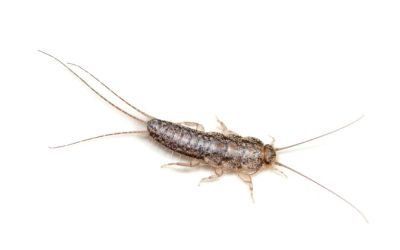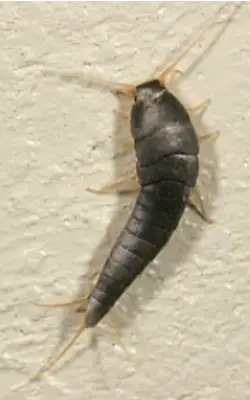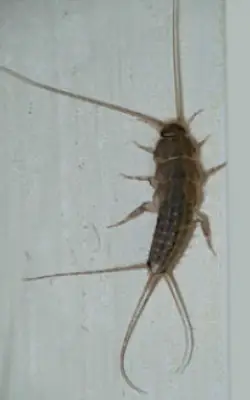Silverfish and firebrat control
Effective and Reliable Rodent Control

Getting rid of silverfish and firebrats is important for several reasons. These nuisance pests can cause damage to your property by feeding on items like paper, fabric, and food, leading to costly repairs. Additionally, their presence can contaminate food storage areas and trigger allergic reactions.
Firebrats, in particular, pose a fire hazard as they are attracted to warm environments and can infest electrical appliances, potentially causing a short circuit. Moreover, the unsightly appearance of silverfish and firebrats can be embarrassing and detract from a clean living environment. To avoid these problems, it’s essential to take steps to eliminate silverfish and firebrats from your home and prevent future infestations.
While both silverfish and firebrats are considered nuisance pests, understanding their differences in appearance, habitat preferences, and diets can help in effectively identifying and addressing an infestation in your home.
The process to eradicate silverfish involves several steps:
By combining both environmentally-friendly pest control services and an Integrated Pest Management (IPM) approach, we will create a specialized treatment program tailored to your specific location and infestation. Our mission is to eradicate pests in your home or business to give you peace of mind and to ensure the safety of you and those you care about.
Inspection: A 1st Pest Control technician will conduct a thorough inspection of the property to identify the extent of the infestation, locate hiding spots, and determine the underlying causes of the problem.
Treatment: Based on the inspection findings, the technician will create a customized treatment plan using a combination of insecticidal dust, sprays, baits, and traps to target silverfish and firebrats where they nest and feed.
Crack and crevice treatment: Special attention is given to treating cracks, crevices, baseboards, and other hiding spots where silverfish and firebrats are likely to harbor. This helps to directly eliminate the pests and disrupt their breeding and feeding areas.
Sanitation recommendations: The technician may provide recommendations on improving sanitation practices, reducing clutter, and eliminating moisture sources to make the environment less conducive to silverfish and firebrats.
Follow-up visits: Depending on the severity of the infestation, 1st Pest Control may schedule follow-up visits to monitor the effectiveness of the treatment, reapply products if needed, and implement preventive measures to keep silverfish and firebrats at bay.
Is that a silverfish or a firebrat?
While both silverfish and firebrats are considered nuisance pests, understanding their differences in appearance, habitat preferences, and diets can help in effectively identifying and addressing an infestation in your home.

Firebrats
Firebrats have a flatter, elongated body with a mottled pattern of brown and gray scales. They are smaller than silverfish and have shorter, bristle-like antennae and three tail-like appendages at the rear.
Firebrats thrive in warm, humid conditions and are commonly found in areas such as boiler rooms, attics, and near heat sources like ovens and furnaces. They are more heat-tolerant than silverfish.
Firebrats also feed on starchy materials but have a preference for high-protein foods such as animal-based products like pet food, dead insects, and dried meats.

Silverfish
Silverfish have a tapered, carrot-shaped body covered in silvery scales that give them a metallic appearance. They are typically light gray or silver in color and have long antennae and three tail-like structures at the end of their bodies.
Silverfish prefer damp, dark environments such as basements, kitchens, and bathrooms. They are often found hiding in cracks and crevices, paper piles, bookshelves, and behind wallpaper.
Silverfish feed on starchy materials like paper, glue, fabric, and food crumbs. They are known to cause damage to books, clothing, and stored food items.

New to 1st Pest Control?
Enjoy 10% OFF your first treatment service.
Enter Code NEW10 in the contact form

Ready to Rid Your Home of Pests? Contact 1st Pest Control Now for Expert Treatments.
Request a free, no-obligation estimate
FAQs - Silverfish and firebrats
What do silverfish and firebrat look like?
Silverfish and firebrats are wingless insects with flat and elongated bodies that taper off at the back end into three long thin appendages, or cerci. Some have eyes, whereas some species do not. Silverfish are identified by their silver coloured metallic scales.
In contrast, the firebrats’ distinct feature is the scattering of brown scales over the body creating a patterned appearance. Mature silverfish and firebrats grow to approximately half an inch long.
Where do they come from?
Silverfish and firebrats are attracted to an accessible food source, as well as moist and dark places in which to hide. As a result, residences or commercial buildings are ideal habitats for these insects. Their small size allows them to slip through cracks and crevices of a building’s perimeter, or unknowingly carried inside on people or objects.
Once inside, they travel across or through ceilings, walls, baseboards, floors, and other gaps in a building’s structure. They tend to stay concealed until an area is infested.
Can they cause any damage to my property?
Silverfish and firebrats cause damage by consuming a variety of items inside a residence. These insects create small holes in the material they feed on and leave yellow stains on fabrics. They are opportunistic feeders that come out at night to scavenge for nearby food.
Their diet consists of sugary or starchy food, other insects, and household material (e.g. paper-based products, adhesive material, fabrics), all of which are easily accessibly in an occupied residence or commercial building (e.g. offices, restaurants).
Without silverfish extermination, populations will grow into an infestation and damages from their feeding activity will become more noticeable.
Where do I normally find silverfsh and firebrats?
Silverfish and firebrats are found in moist, dark environments of a residence. However, silverfish prefer cooler, moist environments, whereas firebrats tend towards warmer, humid surroundings. These insects are commonly found in storage areas, such as closets, cabinets and bookshelves. Warmer areas harboring firebrats include bathrooms, attics, and places near furnaces, hot water pipes and insulation. Silverfish and firebrats tend to keep away from humans and are generally found hiding in locations away from regular human activities and disturbances.
Where do they come from?
Silverfish and firebrats are attracted to an accessible food source, as well as moist and dark places in which to hide. As a result, residences or commercial buildings are ideal habitats for these insects. Their small size allows them to slip through cracks and crevices of a building’s perimeter, or unknowingly carried inside on people or objects.
Once inside, they travel across or through ceilings, walls, baseboards, floors, and other gaps in a building’s structure. They tend to stay concealed until an area is infested.
Why do I need to get rid of them?
Silverfish and firebrat feeding activities damage household objects and furnishings. A large insect population will lead to larger, more noticeable damage that may be costly to fix or replace.


